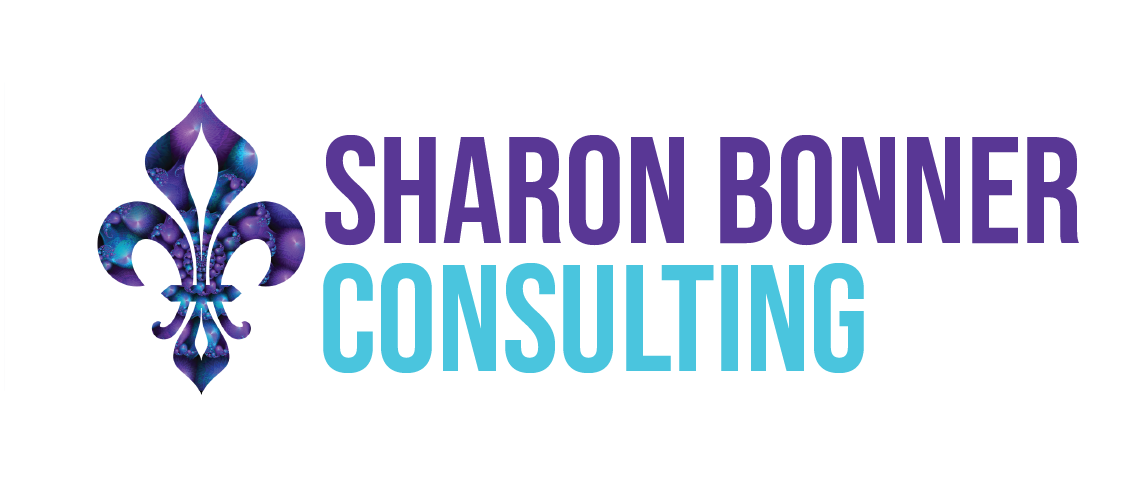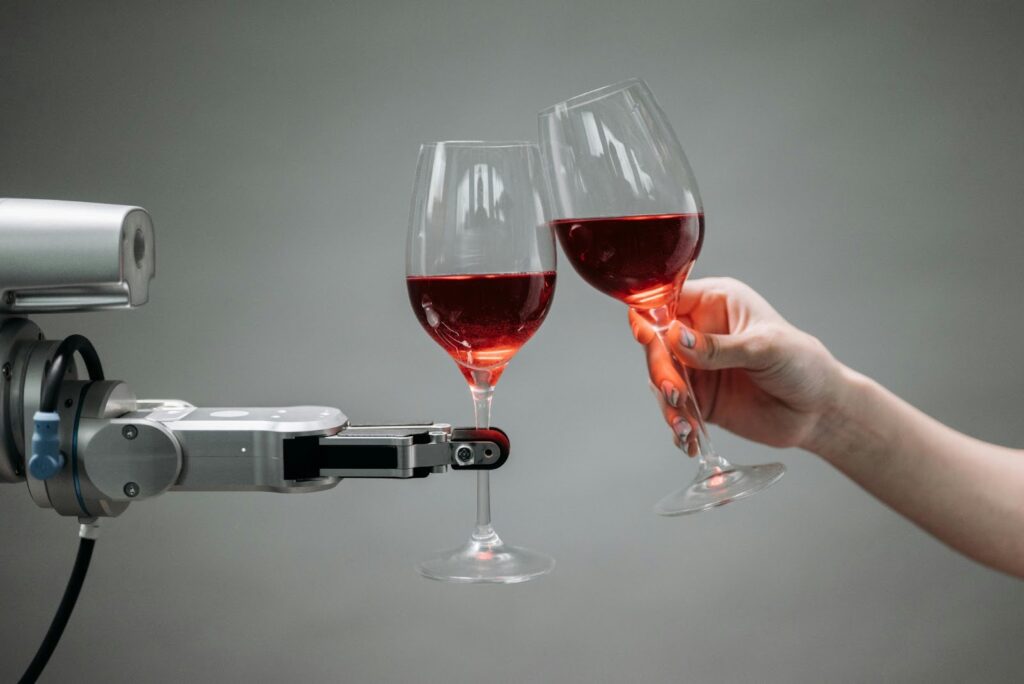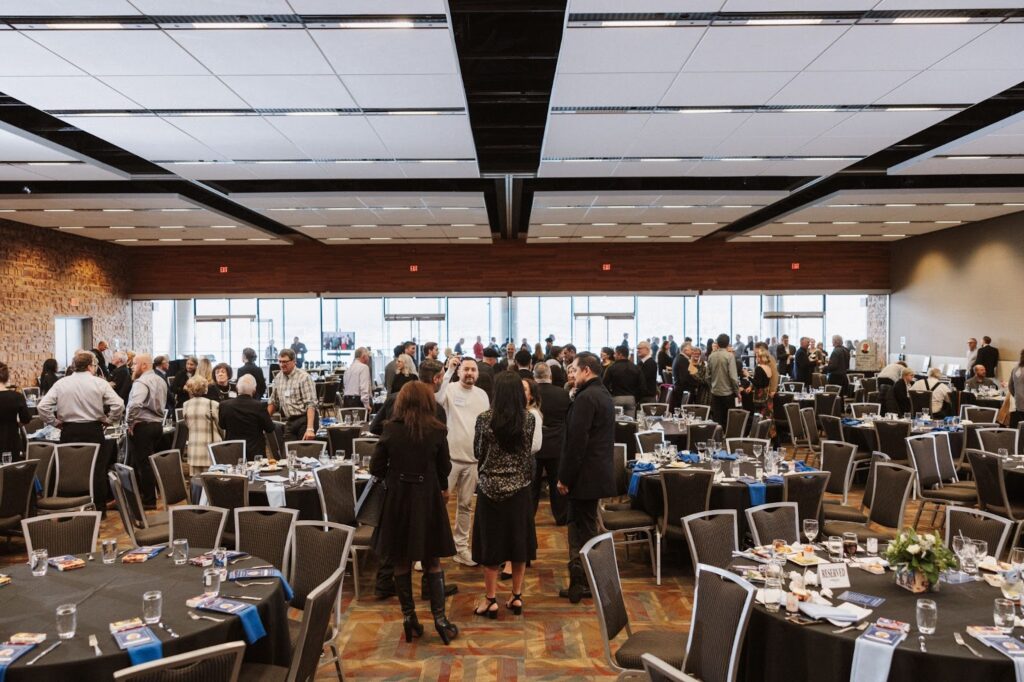Event ROI seems to get all the attention, and for good reason. For those who don’t know, ROI stands for return on investment, and who doesn’t like a positive net return? Scoring a high ROI is always the goal; however, why settle for okay when you can achieve maximum results using the following suggestions?
Before I reveal the key to success, it is important to understand what ROI is, why it is significant in event planning, and how to measure it accordingly. ROI is a metric used to categorize an event based on its rate of success. Keep in mind that most events are planned with a few things in mind, such as their purpose, cause, and objectives. For example what can this event can bring in terms of new connections, adventures, raising funds, and much more.
So, how is ROI measured? By attendees’ satisfaction and hype even before the event itself, brand exposure, funds raised, and new business opportunities. In other words, positive outcomes! According to Canadian Special Events everyone need an Event Technologist.
AI-Powered Analytics
With the rise of AI usage, you would be unwise not to use it to your advantage. Think of it this way; it’s like having your own analysis in your back pocket. Instead of spending hours analyzing charts, you could simply ask for the conclusion. For example, we use AI to understand attendees’ behaviours, their preferences, and how to shape an event that matches their requests.
But be courteous. AI is great, however, keep in mind that there will always be security concerns. Frankly, it doesn’t always get it right in terms of understanding human nature. By that, I mean it took us centuries to understand humans to some extent, and it’s still not fully discovered. Therefore, we know that AI isn’t 100% accurate as we would like it to be. However, we recommend you use it to evaluate attendee data and provide insights and recommendations for future events.
Augmented Reality (AR) and Virtual Reality (VR)
Incorporating Augmented Reality (AR) or Virtual Reality (VR) into an event can transform the experience and leave guests truly amazed. Here’s how these technologies can provide that “WOW” factor:
1. Immersive Experiences
- VR: Allows guests to step into a completely different world. Whether it’s exploring a virtual version of a distant location, diving into a simulated environment, or engaging in interactive games, VR offers a level of immersion that traditional events can’t match.
- AR: Enhances the real world with digital overlays. This can be anything from interactive 3D models and animations to information layers that provide additional context about the event or its theme.
2. Unique Interactions
- VR: Creates opportunities for unique, shared experiences. Attendees can participate in virtual activities together, such as virtual escape rooms or collaborative games, regardless of their physical location.
- AR: Enables interactive elements that engage guests in creative ways. For example, AR can be used to trigger virtual objects when scanning certain items or locations at the event, making it feel like a treasure hunt or a scavenger hunt.
3. Enhanced Visual Appeal
- VR: Provides visually stunning environments that can be customized to fit the theme of your event. This can be particularly impactful for product launches, where guests can virtually explore new products in a dynamic setting.
- AR: Adds an extra layer of visual interest. For instance, AR can animate event signage, provide interactive product demos, or even create digital art installations.
4. Memorable Takeaways
- VR: Offers experiences that guests can remember long after the event. Virtual reality experiences can be recorded or shared, so attendees can relive their moments or showcase them to others.
- AR: Can provide personalized souvenirs or interactive content that guests can access through their smartphones. For example, an AR app could allow attendees to view and interact with virtual content related to the event after they leave.
5. Increased Engagement
- VR: Captures attention with its novelty and immersion. Attendees are often eager to try out VR experiences, which can lead to higher engagement and more meaningful interactions during the event.
- AR: Encourages participation and exploration. Interactive AR elements can lead guests to discover new aspects of the event, increasing their overall engagement and satisfaction.
6. Innovative Storytelling
- VR: Lets you tell stories in a completely new way. You can create a narrative experience where guests are not just passive observers but active participants in a story that unfolds around them.
- AR: Enhances storytelling by layering digital content over real-world elements. This can bring static displays to life or add depth to presentations and exhibits.
By leveraging AR and VR, you can create an event that stands out from the rest, offering a level of interaction and immersion that traditional formats simply can’t provide.
Live Streaming and Hybrid Events
Why worry about not having enough space or RSVPs from guests if you can simply live stream it or have a hybrid event for broader attendance? The more eyes, the better.
Live streaming and hybrid events can significantly boost your ROI in several ways:
1. Expanded Reach
- Global Audience: Live streaming allows you to reach a global audience without geographical limitations, expanding your event’s potential viewership.
- Increased Accessibility: Hybrid events combine in-person and online experiences, making it easier for people to attend regardless of their location or schedule.
2. Cost Efficiency
- Reduced Travel Costs: For hybrid events, fewer attendees may need to travel, cutting down on expenses related to transportation, accommodation, and catering.
- Lower Venue Costs: Virtual components can reduce the need for large physical spaces, decreasing venue rental costs.
3. Enhanced Engagement
- Interactive Features: Live streaming platforms often offer interactive tools like polls, Q&A sessions, and chat functions, increasing audience participation and engagement.
- On-Demand Content: Content from live and hybrid events can be recorded and repurposed for on-demand access, extending the event’s lifespan and value.
4. Data Collection and Insights
- Analytics: Digital platforms provide valuable data on viewer behavior, preferences, and engagement levels, allowing you to tailor future events and marketing strategies.
- Feedback Mechanisms: Real-time feedback through surveys and polls can provide immediate insights into attendee satisfaction and areas for improvement.
5. Sponsorship and Monetization Opportunities
- Sponsorship Exposure: Sponsors can benefit from increased visibility through online branding and integration into live streams, potentially leading to higher sponsorship revenue.
- Monetization Options: Hybrid and virtual events can offer various monetization methods, such as pay-per-view access, virtual booths, and digital advertising.
6. Flexibility and Adaptability
- Scalability: Hybrid events allow you to scale the in-person component up or down based on demand, optimizing resources and costs.
- Contingency Planning: In case of unforeseen circumstances, such as travel restrictions or weather issues, the virtual component ensures the event can continue smoothly.
7. Improved Brand Perception
- Innovation: Embracing live streaming and hybrid models demonstrates innovation and adaptability, enhancing your brand’s reputation as forward-thinking and tech-savvy.
- Customer Experience: Offering multiple ways to participate and engage shows consideration for diverse audience needs, improving overall satisfaction and loyalty.
By leveraging these benefits, live streaming and hybrid events can help maximize your ROI through broader reach, cost savings, enhanced engagement, valuable data, and new revenue opportunities.
Social Media Integration
If you are still sceptical about using social media to promote your event, then wake up. Everyone is online; almost everyone has a profile, whether it is on Instagram, Facebook, Twitter, LinkedIn, and more. It’s almost a shame not to use these platforms to spread brand awareness and promote upcoming events!
Social media integration can significantly boost your Return on Investment (ROI) in several ways:
1. Increased Brand Visibility
By integrating social media into your marketing strategy, you reach a larger audience. When your content is shared or interacted with, it exposes your brand to new potential customers, increasing your visibility and potential sales.
2. Enhanced Customer Engagement
Social media platforms allow for direct interaction with your audience. Engaging with customers through comments, messages, and posts builds relationships, fosters loyalty, and can lead to higher conversion rates.
3. Improved Targeting and Personalization
Social media platforms offer advanced targeting options. By analyzing user behavior and preferences, you can tailor your ads and content to specific segments of your audience, improving the effectiveness of your campaigns and reducing wasted spend.
4. Cost-Effective Marketing
Social media marketing often costs less compared to traditional advertising methods. By leveraging organic content and paid ads, you can achieve a higher ROI. Additionally, the ability to track and measure performance in real-time allows for adjustments to optimize your spending.
5. Valuable Insights and Analytics
Social media platforms provide detailed analytics about your audience’s behavior and your content’s performance. This data helps you understand what works and what doesn’t, allowing you to refine your strategy and improve your ROI over time.
6. Increased Website Traffic
Social media integration can drive more traffic to your website. Sharing blog posts, promotions, and product information on social media encourages users to visit your site, which can lead to more conversions.
7. Enhanced Brand Loyalty and Trust
Regular and authentic interactions on social media can build trust and loyalty among your audience. Customers who feel valued and engaged are more likely to become repeat buyers and advocates for your brand.
8. Competitive Advantage
By effectively integrating social media, you can stay ahead of competitors who may not be leveraging these platforms as effectively. This can help you capture a larger market share and improve your overall ROI.
Real-Time Feedback Tools
Use an app like the Chime Live℠ Engagement Platform to help you gather instant responses and provide in-depth analytics to track participant engagement and interaction throughout the event, allowing for immediate adjustments. This app also has other features such as live polling, Q&A sessions, upvoting, word clouds, and social media integration, which tremendously help with real-time audience interaction and participation, making the event more dynamic and engaging. Chime Live also supports both in-person and virtual events, offering low-latency streaming and seamless connectivity, and much more!
Chatbots and AI Assistants
Here’s one more thing you could use to enhance your guest experience, use an AI assistant or Chatbot to manage attendees’ queries in real time. Using chatbots and AI assistants can significantly boost your event’s ROI by enhancing various aspects of event management and attendee experience.
By integrating chatbots and AI assistants, you can create a more efficient, engaging, and personalized experience for your event attendees, ultimately enhancing your ROI through improved satisfaction, streamlined operations, and valuable data insights.
Conclusion
Adopting innovative technologies to level up your event is the next big thing, especially when it comes to event ROI! Using these trends would only elevate your event planning, so why wait? Let’s collaborate!
Resources:
Canadian Special Events. “5 Reasons Why You Need an Event Technologist.” Canadian Special Events, 2023, https://canadianspecialevents.com/5-reasons-why-you-need-an-event-technologist/.
BizBash. “ROI & ROE Strategies to Supercharge Your Event Value.” BizBash, 2023, https://www.bizbash.com/industry-insiders/article/22911492/roi-roe-strategies-to-supercharge-your-event-value.
BizBash. “Guest Column: 7 Common Anniversary Event Pitfalls and Mitigation Strategies.” BizBash, 2023, https://www.bizbash.com/production-strategy/opinion-experts/article/22911572/guest-column-7-common-anniversary-event-pitfalls-and-mitigation-strategies.
ASAE Center. “Coaching for Your Staff: Who, Why, and ROI.” ASAE Center, 2023, https://www.asaecenter.org/association-careerhq/career/articles/talent-management/coaching-for-your-staff-who-why-and-roi.









